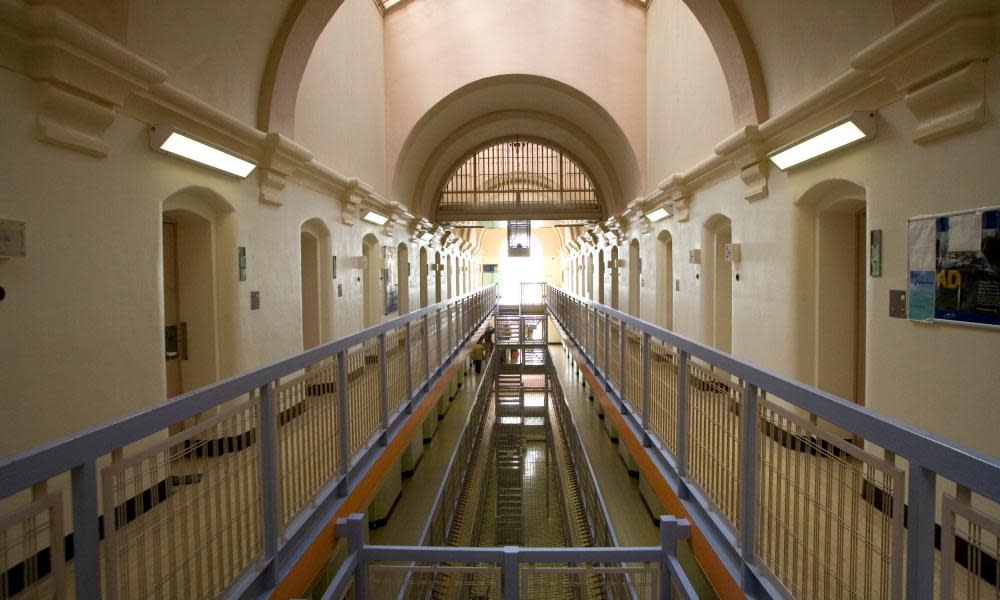Prison visits could resume in July in England and Wales

Families and friends are expected to be able to visit prisoners from July as part of a wider Covid-19 recovery plan for jails in England and Wales, which have been placed under a severely restrictive regime for nearly three months.
Social visits, class-based education and offender behaviour programmes could be reintroduced from next month in line with the wider alert system for the community.
Prisoners and their visitors could be required to wear personal protective equipment (PPE), screens may be used and physical distancing will be required. The government has warned this will happen sooner at some prisons than others, depending on the layout and design of the jail.
The current restrictive regime, which has reduced time spent out of cells to about 30 minutes a day, suspended prison transfers and forced new arrivals to be quarantined for 14 days, has been hailed a success by ministers as deaths and infection rates behind bars have been significantly lower than expected.
However, concerns have been raised over the sustainability of the regime, given the impact it could have on prisoners’ wellbeing. A recent spate of suicides fuelled fears that the regime was having a devastating toll.
As of 5pm on Sunday, 466 inmates across 79 prisons and 923 staff across 105 prisons had tested positive for coronavirus. The figures are not live cases and include those who have recovered.
So far, 23 prisoners and nine staff are known to have died, as well as an prison escort driver and an NHS trust employee working in a secure training centre. There are about 80,000 prisoners across 117 prisons in England and Wales, and approximately 33,000 staff working in public sector prisons.
Epidemics of infectious diseases behave in different ways but the 1918 influenza pandemic that killed more than 50 million people is regarded as a key example of a pandemic that occurred in multiple waves, with the latter more severe than the first. It has been replicated – albeit more mildly – in subsequent flu pandemics.
How and why multiple-wave outbreaks occur, and how subsequent waves of infection can be prevented, has become a staple of epidemiological modelling studies and pandemic preparation, which have looked at everything from social behaviour and health policy to vaccination and the buildup of community immunity, also known as herd immunity.
Is there evidence of coronavirus coming back in a second wave?
This is being watched very carefully. Without a vaccine, and with no widespread immunity to the new disease, one alarm is being sounded by the experience of Singapore, which has seen a sudden resurgence in infections despite being lauded for its early handling of the outbreak.
Although Singapore instituted a strong contact tracing system for its general population, the disease re-emerged in cramped dormitory accommodation used by thousands of foreign workers with inadequate hygiene facilities and shared canteens.
Singapore’s experience, although very specific, has demonstrated the ability of the disease to come back strongly in places where people are in close proximity and its ability to exploit any weakness in public health regimes set up to counter it.
What are experts worried about?
Conventional wisdom among scientists suggests second waves of resistant infections occur after the capacity for treatment and isolation becomes exhausted. In this case the concern is that the social and political consensus supporting lockdowns is being overtaken by public frustration and the urgent need to reopen economies.
The threat declines when susceptibility of the population to the disease falls below a certain threshold or when widespread vaccination becomes available.
In general terms the ratio of susceptible and immune individuals in a population at the end of one wave determines the potential magnitude of a subsequent wave. The worry right now is that with a vaccine still months away, and the real rate of infection only being guessed at, populations worldwide remain highly vulnerable to both resurgence and subsequent waves.
The prisons and probation minister, Lucy Frazer, said: “The decision to introduce restricted regimes across our jails was not taken lightly, and I want to acknowledge the impact of that.
“While safety must remain our paramount concern, the sacrifices of recent months mean we are now in position to consider how to cautiously restart aspects of daily prison life, such as social visits, education and work – with adaptations where necessary to ensure safety.
“This cannot happen in a uniform way across all prisons and decisions will take account of individual circumstances. Inevitably this will mean some prisons move faster than others.”
She added: “This will not be a straightforward return to normality and local restrictions may need to be reimposed if outbreaks occur.”
The government is working towards moving to alert level three for the wider population in July, meaning a Covid-19 epidemic is in general circulation, when it hopes to further ease some restrictions and distancing measures.
At a similar time, it is hoped some prisons would move to alert level three, under which the highest priority areas of the regime, such as family visits, could start to be reinstated with restrictions.
Prisons will not move to alert level two until there is only evidence of infection in a small number of prisons and the wider community is also moving to level two, meaning Covid-19 is present in the UK but the number of cases and transmission is low.
Frances Crook, chief executive of the Howard League for Penal Reform, said: “We welcome the reintroduction of activities and family contact as prolonged isolation is inhumane and risks mental and physical harm.
“However, the announcement is disingenuous as overcrowding still puts staff and prisoners at risk, and some of the measures are no more than empty promises.”


